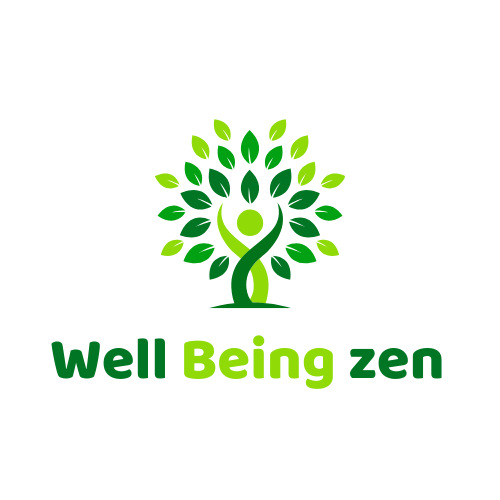Take a quick scan of your body right now. Are your shoulders hunched forward, creeping towards your ears? Is there a dull ache blooming in your lower back? Are your eyes tired, and your mind feeling a little foggy? If you’re reading this from your office chair, chances are you’re nodding along.
Our bodies weren’t designed to stay folded into a chair for eight hours a day, staring at a glowing screen. This sedentary lifestyle leads to what we call the “office body”—stiff, sore, and drained of energy. The tension accumulates in our necks and shoulders, our hips tighten, and our posture begins to suffer. We accept this as a normal part of the workday, but it doesn’t have to be.
What if you could press a reset button in the middle of your afternoon slump? What if you could release that built-up tension, clear your mind, and re-energize your body without even leaving your desk?
That’s the magic of office yoga. This isn’t about rolling out a mat or changing into special clothes. It’s about using small, mindful moments to give your body the movement it craves. Here are seven simple but incredibly effective yoga poses you can do while sitting down, designed to be your secret weapon against workplace discomfort.
Table of Contents
Why Your Desk Job is Crying Out for Yoga
Before we dive into the poses, let’s understand why they are so crucial. Prolonged sitting can lead to a cascade of issues: poor circulation, weakened core muscles, compressed spinal discs, and mental fatigue. Our breath becomes shallow, limiting oxygen flow to the brain and leaving us feeling sluggish and uninspired.
Desk yoga is the perfect antidote. These discreet stretches, often called “chair yoga,” increase blood flow, decompress the spine, release muscle tension, and bring a much-needed dose of mindful awareness to your day. Think of them not as an interruption to your work, but as an investment in your focus, productivity, and overall well-being.
Your Midday Oasis: 7 Yoga Poses You Can Do While Sitting
Find a moment between tasks, take a deep breath, and let’s begin. For all these poses, start by sitting upright in your chair with both feet flat on the floor, away from the backrest to engage your core.
For Your Neck and Shoulders (Where Stress Lives)
This is where we hold the majority of our work-related tension. These gentle movements will feel like a sigh of relief for your upper body.
1. Neck Rolls (The ‘Let It Go’ Release)
- The Benefit: Releases stiffness and tension in the neck and upper traps, a common area for stress to accumulate.
- How to Do It:
- Sit tall and gently drop your right ear towards your right shoulder. Hold for three deep breaths, feeling a gentle stretch along the left side of your neck.
- Slowly roll your chin down towards your chest, and then over to the left, bringing your left ear towards your left shoulder. Hold again for three breaths.
- Repeat this half-circle motion 3-5 times, moving slowly and mindfully. Avoid rolling your head all the way back, as this can compress the neck vertebrae.
- Mindful Tip: Close your eyes as you do this. Synchronize your movement with your breath, exhaling as you roll down and inhaling as you come up to the side.
2. Seated Cat-Cow (The Spine Awakener)
- The Benefit: This classic yoga movement, adapted for your chair, warms up the spine, improves flexibility, and relieves back tension.
- How to Do It:
- Place your hands on your knees.
- For Cow Pose: As you inhale, gently arch your spine, draw your shoulders back, and lift your chest and gaze upwards.
- For Cat Pose: As you exhale, round your spine, tuck your chin to your chest, and gently pull your navel in towards your backbone.
- Flow between these two poses for 5-8 breaths, letting your breath guide the movement.
- Mindful Tip: Imagine each vertebra of your spine moving independently, creating a fluid, wave-like motion.
3. Eagle Arms (The Shoulder Unwinder)
- The Benefit: Provides a deep stretch for the shoulders and upper back, targeting the often-tight area between the shoulder blades.
- How to Do It:
- Stretch your arms straight out in front of you.
- Cross your right arm over your left, then bend your elbows. The backs of your hands will be facing each other.
- From here, you can either keep the backs of your hands together or wrap your right hand around to bring your palms to touch.
- Gently lift your elbows while keeping your shoulders relaxed down your back.
- Hold for 5 deep breaths, then unwind and repeat on the other side with the left arm over the right.
- Mindful Tip: Breathe directly into the space between your shoulder blades, imagining the tension melting away with each exhale.
For Your Spine and Core (Your Body’s Foundation)
4. Seated Spinal Twist (The ‘Wring It Out’ Detox)
- The Benefit: Decompresses and rehydrates the spinal discs, releases lower back tension, and can aid digestion by gently massaging the abdominal organs.
- How to Do It:
- Sit tall and place your left hand on the outside of your right thigh. Place your right hand on the chair behind you for support.
- As you inhale, lengthen your spine as if a string is pulling the crown of your head upwards.
- As you exhale, gently twist your torso to the right, using your hands as leverage.
- Keep both of your hips grounded in the chair. The twist should come from your spine, not from straining your neck.
- Hold for 5 breaths, then gently release and repeat on the other side.
- Mindful Tip: With every inhale, feel your spine grow longer. With every exhale, see if you can soften and deepen into the twist just a little more.
For Your Hips and Legs (Counteracting the ‘Chair Shape’)
Sitting for hours shortens our hip flexors and tightens our glutes. These stretches are essential to maintain mobility.
5. Seated Figure-Four Stretch (The Hip Opener)
- The Benefit: A fantastic stretch for the outer hip and glute muscles, which can become extremely tight from prolonged sitting and contribute to lower back pain.
- How to Do It:
- While seated, lift your right ankle and place it on top of your left thigh, just above the knee.
- Keep your right foot flexed to protect your knee joint.
- You may already feel a stretch. If you want more, sit tall and gently hinge forward from your hips with a straight back until you feel a comfortable stretch.
- Hold for 5-8 deep breaths. Release and switch sides.
- Mindful Tip: Imagine your hip joint softening and opening with each breath you send to it.
For Your Wrists and Hands (Relief for Keyboard Warriors)
6. Wrist & Finger Stretches (The Carpal Tunnel Soother)
- The Benefit: Prevents and relieves repetitive strain injuries from typing and using a mouse. Essential for maintaining wrist and hand health.
- How to Do It:
- Extend your right arm in front of you, palm facing up. With your left hand, gently bend your right fingers down towards the floor. Hold for 30 seconds.
- Flip your hand so your palm faces down. With your left hand, gently press your right hand down. Hold for 30 seconds.
- Next, make a fist and then spread your fingers as wide as you can. Repeat 5 times.
- Gently shake out both hands.
- Repeat the entire sequence with your left hand.
- Mindful Tip: Pay attention to the intricate sensations in each finger and joint. Send gratitude to your hands for all the work they do.
7. Seated Forward Fold (The Full Body Release)
- The Benefit: A gentle stretch for the entire back, shoulders, and neck.1 It’s a grounding pose that can help calm the mind and relieve fatigue.
- How to Do It:
- Make sure your chair is stable. Widen your feet to about mat’s width apart.
- Exhale and slowly hinge at your hips, letting your torso drape over your thighs.
- Let your head and neck hang completely heavy. You can rest your hands on the floor or hold onto opposite elbows.
- Stay here for 5-8 deep breaths, feeling the gentle release in your spine.
- To come up, place your hands on your thighs and slowly roll up one vertebra at a time, your head being the last thing to lift.
- Mindful Tip: This is a pose of surrender. Consciously let go of any tension you are holding in your jaw, neck, and shoulders.
Conclusion: Transform Your Workspace into a Wellness Space
Your well-being shouldn’t have to wait until you clock out. These simple yoga poses you can do while sitting are proof that you can integrate moments of profound self-care into the busiest of days. They are a declaration that your health matters, even in a corporate environment.
Start small. Choose two or three of these poses and try them during your next break. Set an alarm on your phone to remind you. Notice the difference it makes not just in your body, but in your clarity of mind and your mood. You have the power to transform your desk from a place of stress and stiffness into a personal oasis of wellness.
Which of these poses are you going to try first? Share your favorite desk stretch in the comments below and join the Well Being Zen community of mindful professionals!




